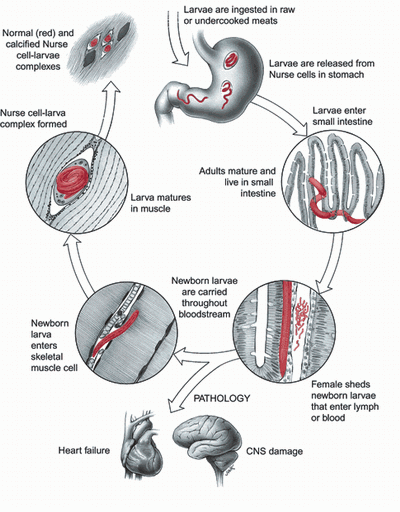|
Toxoplasmosis
Toxoplasmosis is caused by toxoplasma gondii. Toxplasma gondii is detected via serological finding of the trophozoites in acute phase. Tissue biopsy specimen may reveal the present of the cyst. Acute case of toxoplasmosis may present with symptoms and signs of mononucleosis. Toxoplasmosis may affect the immunocompromised patient by leading to reactivation of the disease in the forms of encephalitis. Congenital toxoplasmosis infection may be asymptomatic or present with symptoms and signs such as microcephalus, hydrocephalus, encephalitis, chorioretinitis and cerebral calcification. The mode of transmission may include ingestion of undercooked meat which is contaminated with cyst or transplacental spread ( may lead to spontaneous abortion and stillbirth) which occur during acute infection and exposure to cat feces which contain the oocysts. Trophozoites will develop from the cyst and begin to invade the wall of the intestine. Macrophages will engulf the trophozoites. However, trophozoites will survive and multiply in macrophages and spread to different tissue. Prevention method include proper cooking meat and avoiding the cat litter boxes for pregnant women. Congenital toxoplasmosis can be treated with sulfadiazine and pyrimethamine.
0 Comments
Leave a Reply. |
Kembara's Health SolutionsDiscovering the world of health and medicine. Archives
June 2023
Categories
All
|


 RSS Feed
RSS Feed